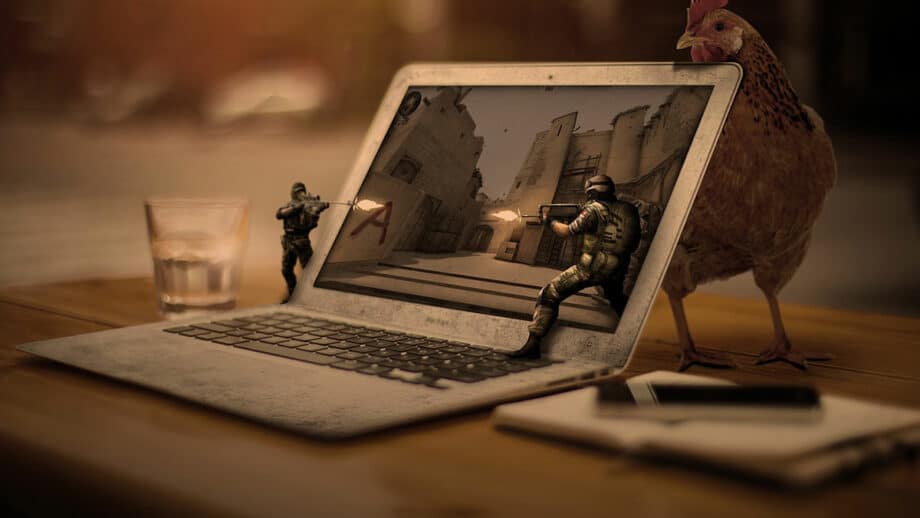Are you trying to take your video game from one market to a global audience? It sounds exciting, but the challenge of making sure players around the world get the same fantastic experience can be tough.
Good news – video game localization is your golden ticket to worldwide success. This process tweaks games so people in different places can enjoy them, understanding all the jokes, quests, and instructions.
“Video Game Localization isn’t just about translating words; it’s about reshaping content including text, pictures, and sound for gamers from various cultures.”
In this guide, we’ll walk through how localization goes beyond translation to include cultural adaptation – ensuring that everyone gets the joke or knows what an item is called in their gaming universe.
We’ve got tips on avoiding common pitfalls and stories of when things go really right. Ready to see your game on screens around the globe? Keep reading!
What is Video Game Localization?

Video game localization is all about making games fit for players around the world. It means changing texts, voices, and even parts of the game so everyone can enjoy it, no matter where they live.
Importance of Video Game Localization in Global Markets
Game localization is key to global success. It’s like giving your game a passport to travel the world. By adapting a game for different markets, you’re not just switching languages.
You’re tweaking cultural references, adjusting humor, and even redesigning characters so they feel right at home in their new settings. This means gamers from Tokyo to Timbuktu can enjoy your creation as if it were made just for them.
“Localization is not just translation; it’s cultural adaptation.”
Andrew Wilson, the CEO of Electronic Arts.
It’s all about building bridges with players worldwide. Think of video game localization as a tool that can significantly boost sales and help your brand shine on the international stage.
A well-localized game speaks directly to its audience, inviting more players into its world and making them stay. Plus, stepping up your globalization strategy could set you apart in the fiercely competitive gaming industry – opening doors to increased revenue and a loyal global player base eager for your next release.
Scope of Video Game Localization
So – moving from the big why to the what and how – let’s talk about what video game localization covers. It’s more than just translating words from one language to another. It’s a deep dive into making games work for players in different parts of the world.
This means changing text, yes, but also tweaking audio and even redesigning visuals to make sure nothing feels out of place. Cultures vary widely – something funny in one country might be offensive in another. So, developers have to think about jokes, symbols, and even colors differently.
Localization isn’t just about swapping sentences; it’s crafting experiences that feel right at home no matter where home is. From dialogues that fit the character’s lips in every language to ensuring legal stuff aligns with local rules – it’s all part of the mix.
And don’t forget cultural sensitivity! A game might need some major changes if it shows something considered taboo in its new market. The goal? To make everyone feel like this game was made just for them, keeping its soul intact while crossing borders smoothly.
The Challenges of Video Game Localization

Translating a game into different languages isn’t just about the words. It’s about making sure gamers from all over can feel right at home in the game world we’ve crafted for them.
Language and Cultural Barriers
Games must speak the player’s language, both in words and culture. This means changing jokes, proverbs, and even items to fit what makes sense in different places around the world.
It’s like making sure a joke doesn’t just translate; it has to be funny in the new place too. Cultural sensitivity is key here – we can’t have symbols or gestures that offend players from another part of the world.
“You’re not just translating a game; you’re reimagining it for everyone.”
Yves Guillemot, the Co-founder and CEO of Ubisoft.
Adapting games for a global audience involves more than swapping out text. You need to know what colors mean good luck, which animals might be bad signs, and if giving a thumbs up is friendly or rude depending on where you are. It’s all about making sure players feel like the game was made just for them, no matter where they live.
Technical Challenges, including Character Limitations and Encoding Issues
One big hurdle in video game localization is dealing with character limitations and encoding issues. This means when you translate your game into different languages, some text might become too long or not display correctly because of different alphabets and symbols used around the world.
Imagine turning a short sentence in English into German, and suddenly it’s twice as long, messing up all your neat text boxes. Or trying to fit Japanese characters into a system that only really likes Latin letters – things can get pretty mixed up.
Another headache is making sure all this localized content actually works across various platforms and devices. Different systems might interpret your encoded text in weird ways, leading to unexpected glitches or even crashes if you’re not careful.
It’s like playing a high-stakes game of digital Jenga where every block is a piece of your carefully translated game script vying for space and compatibility on the global stage.

Challenges to Keep the Original Feel of the Game While Adapting to New Audiences
Keeping the original feel of a game while making it appeal to new audiences is tough. Game developers must find ways to change cultural elements without losing what made their game special in the first place. This means they have to carefully adapt jokes, stories, and characters so they make sense and stay fun for everyone, no matter where they’re from.
This challenge is about balance. Developers work hard to keep the game’s heart beating strong while also wrapping it in a new package that clicks with players across the globe. They tweak texts and audio, double-check cultural sensitivity, and sometimes even change game content to avoid misunderstandings or offenses. All this effort helps ensure that people everywhere can enjoy their creation – feeling right at home while exploring new worlds crafted with care.
Case Studies: Localization Done Right
One standout example is the way “The Witcher 3: Wild Hunt” was localized for different markets. The game developers paid close attention to cultural elements, adapting characters and stories so they felt right at home in each language.
They even went as far as hiring local actors for voice-overs, making sure everything from jokes to folklore matched regional tastes. This approach not only won them fans worldwide but also taught a valuable lesson: knowing your audience can turn a great game into a global sensation.
Another success story comes from “Pokémon Go“, which took the world by storm. Its localization went beyond just translating text; it reimagined core elements of gameplay to fit local cultures.
For instance, certain Pokémon appear more frequently in regions where they would logically exist, based on real-world geography and climate. This clever adaptation encouraged players from all over to explore their surroundings with fresh eyes, proving that thoughtful localization can breathe new life into the game experience and bring people together across the globe.
The Step-by-step Process of Localizing a Video Game

“The magic of localization is the secret ingredient that transforms a good game into a worldwide legend. It’s where art meets hearts in every language.”
Alex Buran, the Founder and CEO of DocTranslator.
Localizing a video game is like giving it a passport to travel the world. It’s all about making sure players from different places can enjoy the game as much as everyone else. Here’s how it’s done:
- Pre-production Analysis and Planning: First, we sit down and figure out what parts of the game need a change to fit into new cultures. We talk about everything from the story to the jokes in the game. This step is like drawing a map before a trip.
- Translation and Cultural Adaptation: Next, we take all the words in the game and switch them to the new language. But it’s not just about switching words; we also tweak things so they make sense in the local culture. Sometimes, we even change some parts of the story or characters.
- Graphic Modification: Yep, we also look at all pictures, icons, and graphics. If something might not make sense or be liked in the new place, we change it. For example, if a hand gesture is cool here but rude somewhere else, we fix that.
- UI/UX Adaptation: Now let’s talk buttons and menus! We adjust these so they feel natural for gamers no matter where they are from. This can mean changing layouts or even how things move on screen.
- Voice-over Recording and Integration: This part is fun – recording new voices for characters! Different places mean different accents or languages for characters. We find awesome voice actors who can bring our characters to life all over again.
- Quality Assurance (QA) and Gameplay Testing Across Different Languages: Time to check our work! We play through the game in every language we’ve added to catch mistakes and make sure nothing was lost in translation.
- Localization Testing by Localization Teams: A special group plays every bit of the game again but focuses on looking for cultural mistakes or glitches that might have slipped through earlier checks.
- Finally comes ongoing updates because games always grow! We keep an eye on feedback from players around the world to make updates or changes as needed.
This journey ensures gamers worldwide get to experience stories, adventures, and pulses-racing action just as intended – maybe with a few local surprises along the way!
Trends and Future Directions in Video Game Localization
Video game localization is stepping into a future where technology plays a big role. Think AI and machine translation getting better day by day. This tech makes translating games faster and more accurate, making sure players around the world get the story just right.
Plus, these advancements mean developers can keep up with the fast pace of releasing games globally without losing quality or cultural touch.
Another big shift? Games are becoming more inclusive, showing diverse characters and stories. Players from all corners of the globe want to see themselves in the games they play. This change pushes for wider cultural adaptation in games, ensuring no one feels left out.
The road ahead looks like it’s paved with smart tech and heartwarming inclusivity, shaping how we bring games to gamers everywhere. Next up: wrapping things up on why adapting your game for global audiences is key to success.
Conclusion

Localization makes games global hits by changing text, audio, and more for different places. It turns language and culture barriers into bridges for players everywhere. Games win big worldwide when they speak the player’s language, in every sense.
So, game makers should really focus on localizing their games right.
This process isn’t just about swapping words; it creates connections across the globe. For a game to rock in new markets, paying attention to the local vibe is key. Hey developers – dive into localization! Your game could be the next global sensation because you cared enough to make it homey for someone far away.





